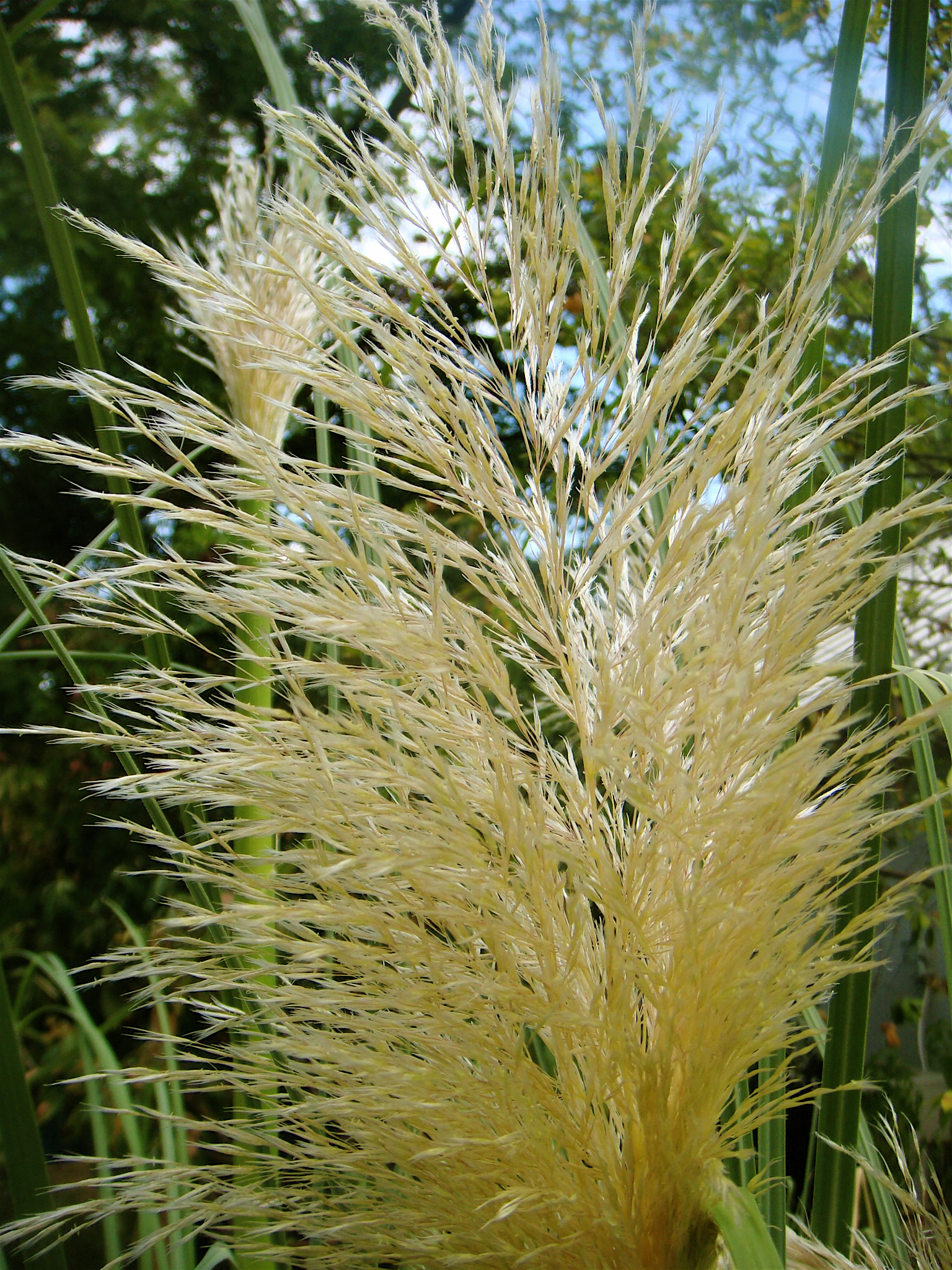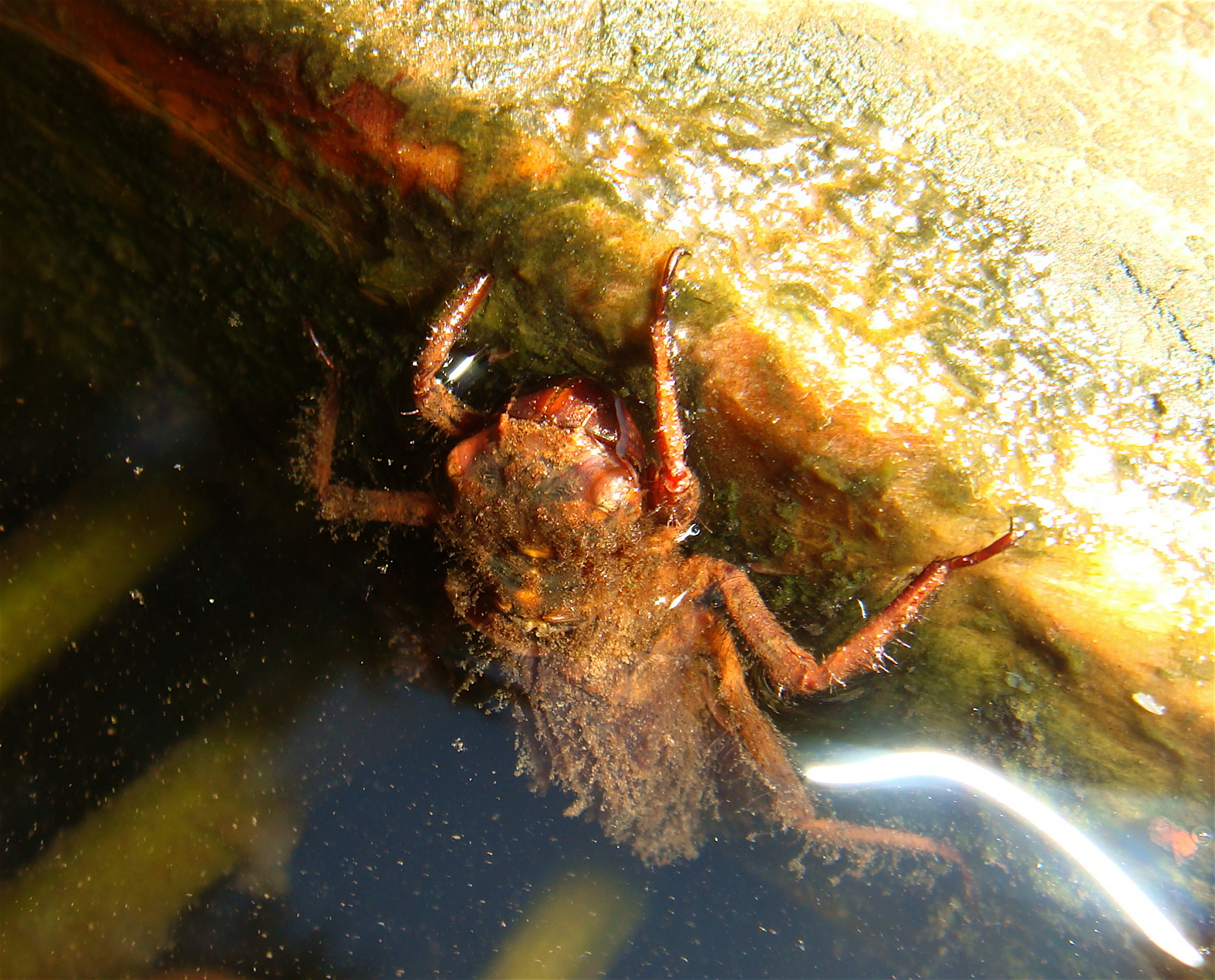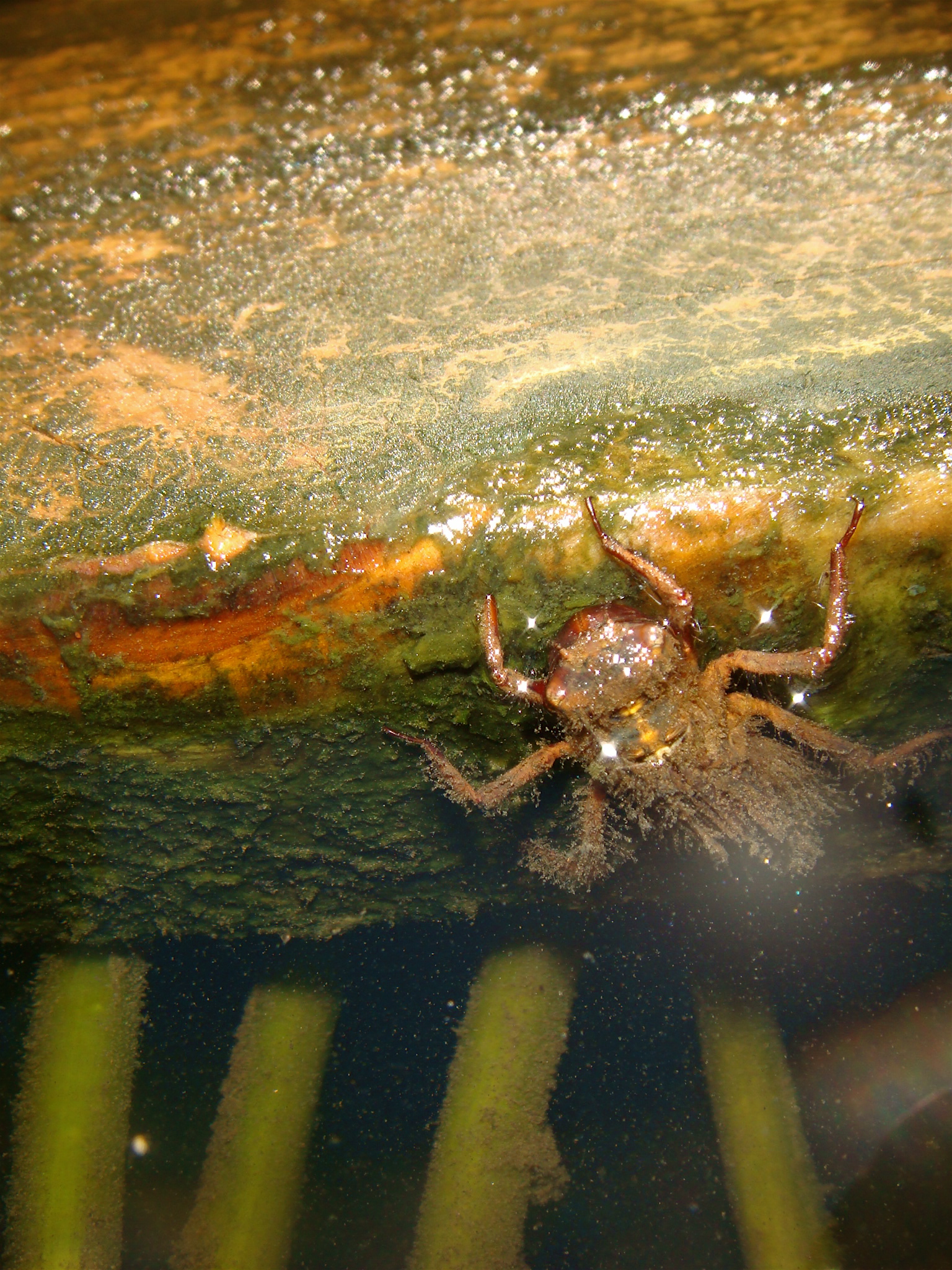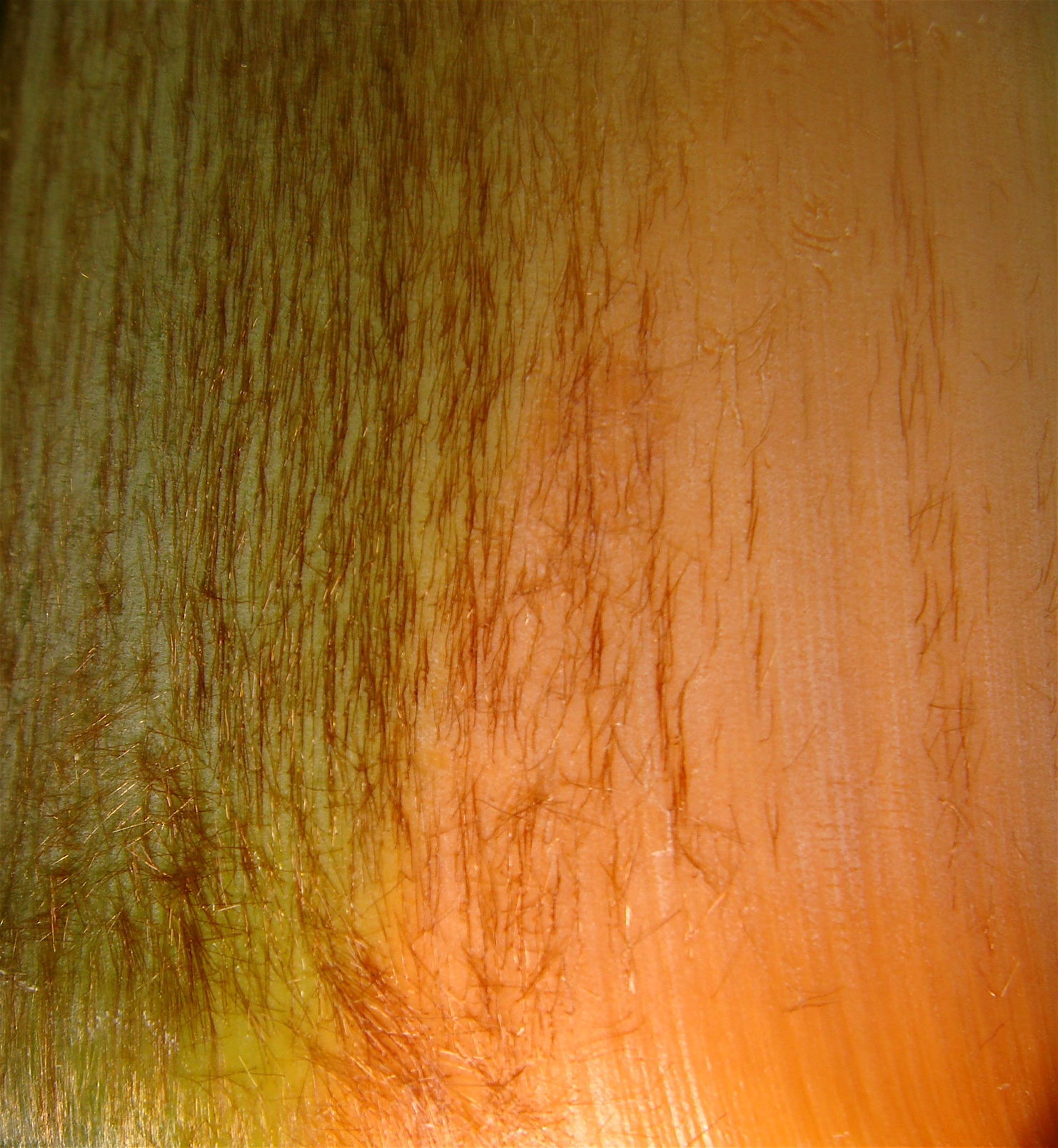
Can you guess what this is?
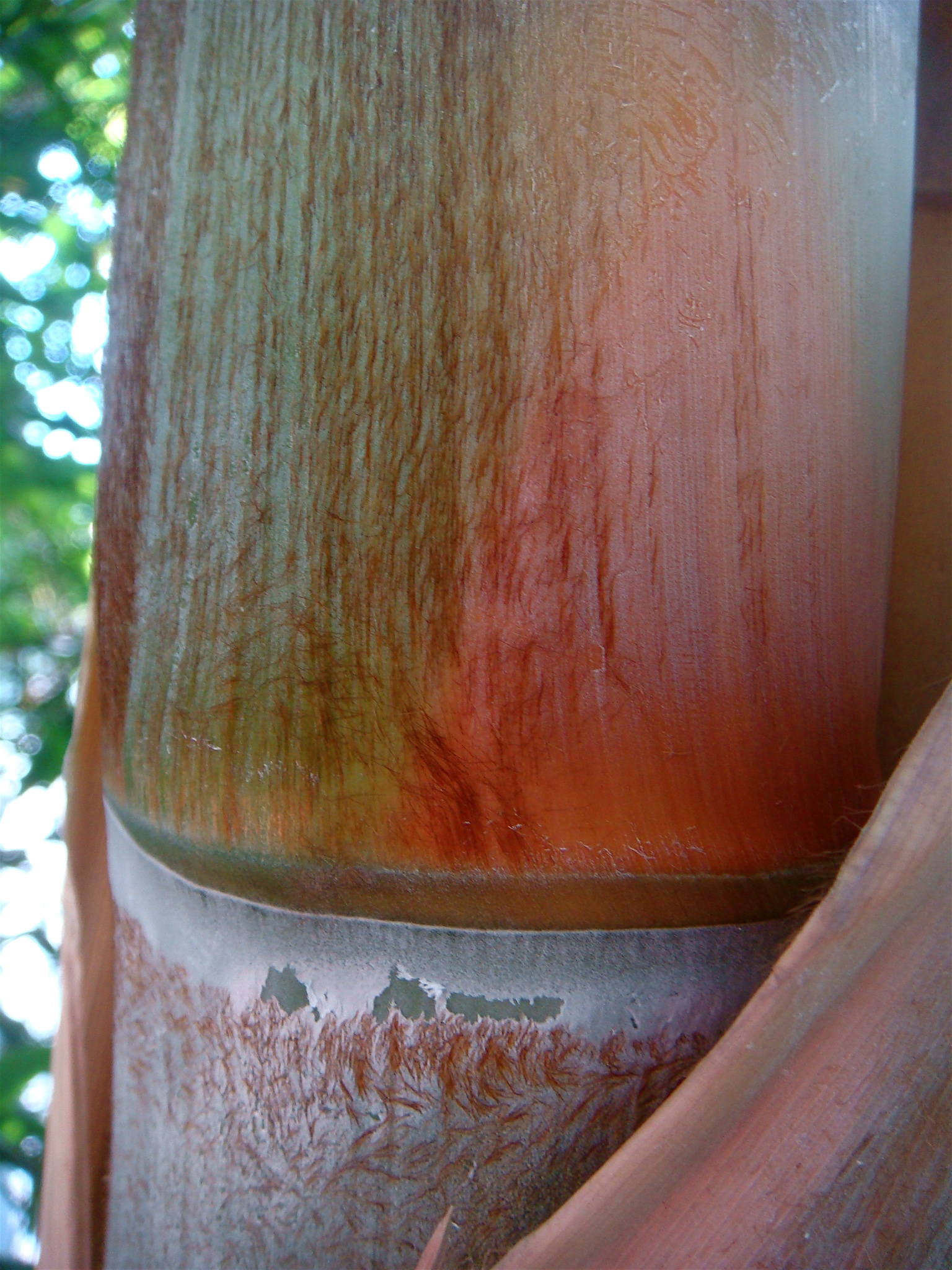
The maroon hairs (oral setae) on this Pubescent Giant Timber culm will eventually disappear as it matures. The color on the new growth ranges from purple to red to green. The larger culms seem to have a lot more of this coloration going on. Giant Timber Bamboo Bambusa oldhamii is native to China, and the most commonly cultivated clumping timber bamboo here in the United States. It is also commonly used in furniture making, most notably in Taiwan, and is even becoming adopted in the laptop market?
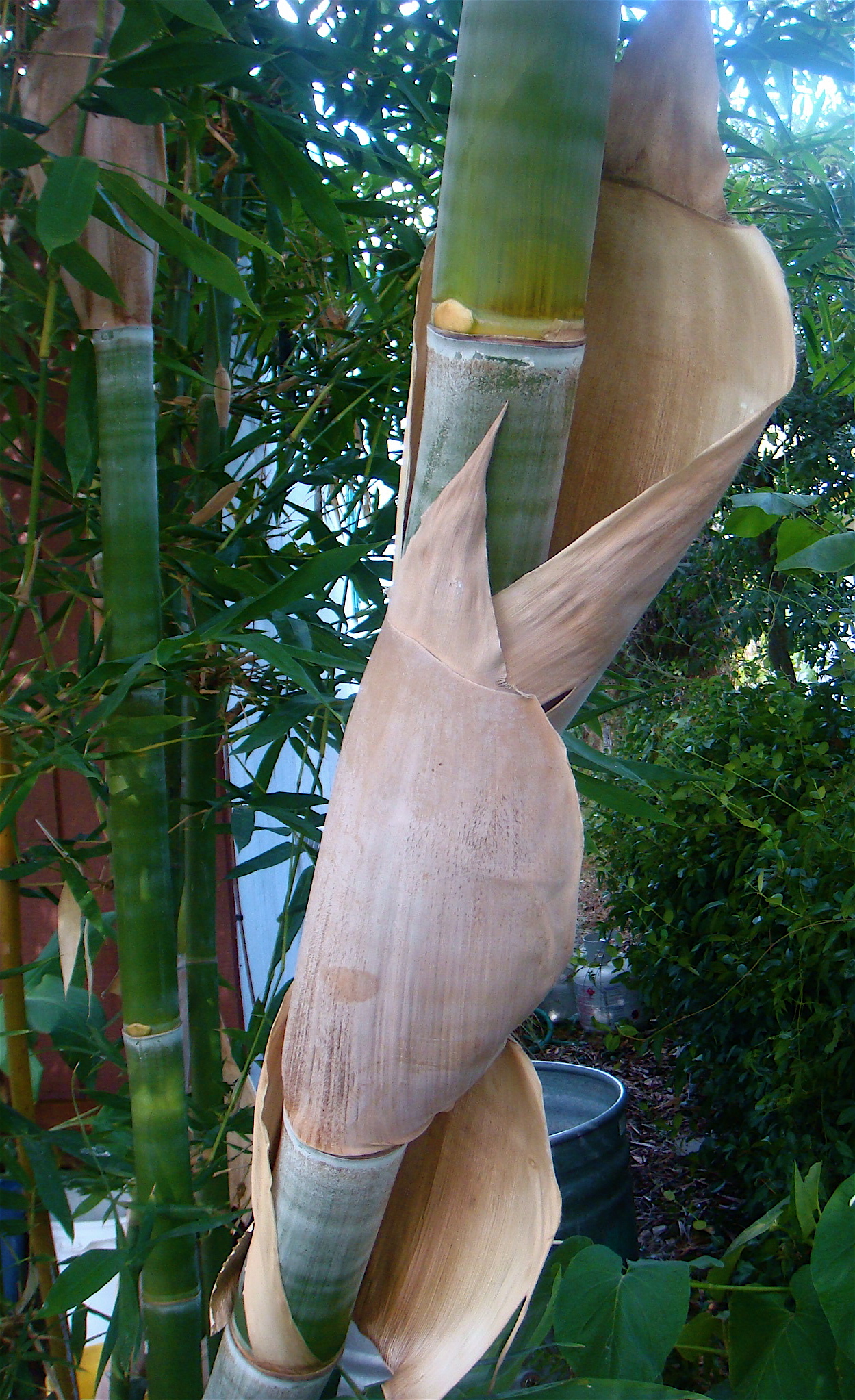

Asus U6: Ecobook bamboo laptop
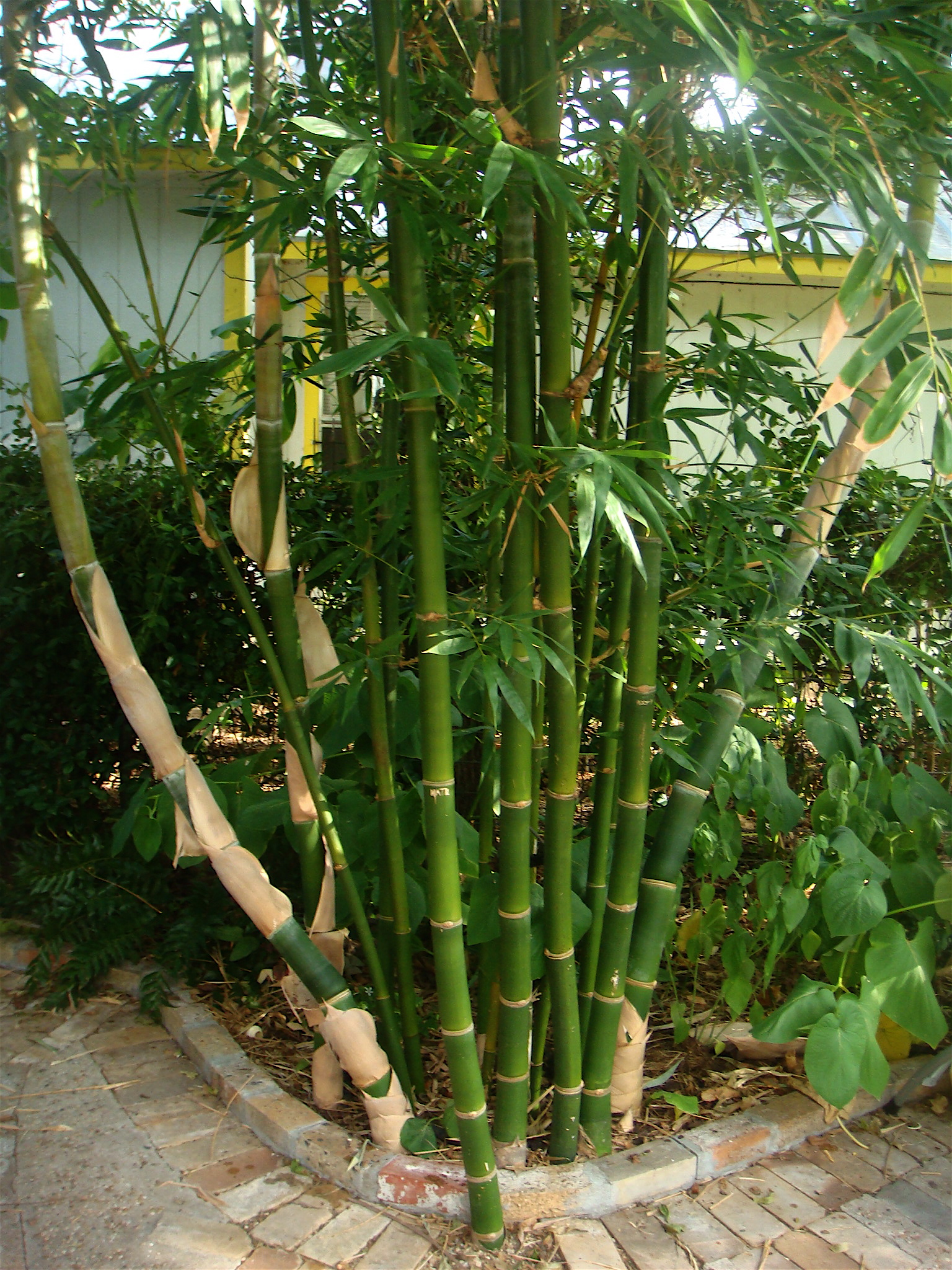
Bamboo is the fastest-growing plant on Earth, it has been measured surging skyward as fast as 121 cm (47.6 inches) in a 24 hour period. This one is a giant of the bamboo world, it is the largest member of the grass family and it is thriving despite our dry conditions. This one has a soaker-hose weaving around the base of the culms and it receives a deep soaking once a week. A great tropical look with an equally tropical rustle when a breeze hits it, we even have a bamboo wind chime hung in it for an added sailing boat sound effect!
Talking about sail boats…imagine taking a trans-Atlantic crossing on one of these beauties:
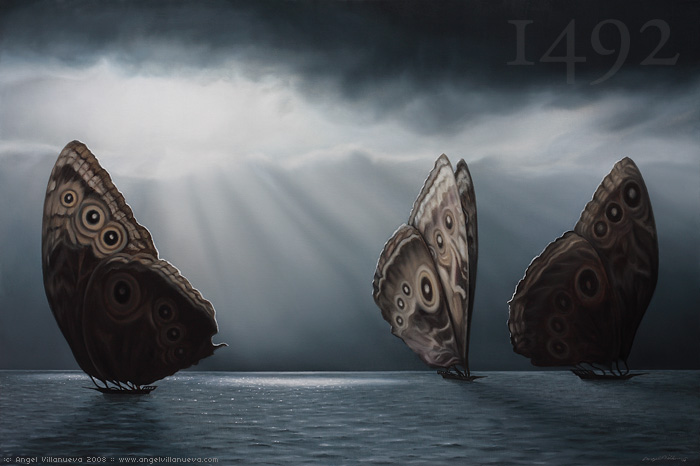
Angel Villanueva, 1492 (2008). Oil on Canvas, 24 x 36 in. Private
Collection, U.S.
In the artist’s own creatively descriptive words…
“1492 is a visual metaphor for Columbus’ ships. The ship’s sails are based on
the patterns found on the underside of the wings on the South American
butterfly Blue Morpho. My inspiration for this piece was a cross between the
history of the Americas and psychoanalysis: in Freudian theory the butterfly
symbolizes transformation and change. Here, the ships are rendered as the
vectors for this change. Carl Sagan once said that the discovery of America
(and all the destruction that came with it) was inevitable, bound to happen
around the time it did. Thus, the conquest is suggested by the painting as
being the result of natural forces”.
What a stunning painting! See more of Angel’s work here: http://www.angelvillanueva.com/en/paintings/index.htm
While we are on the subject…
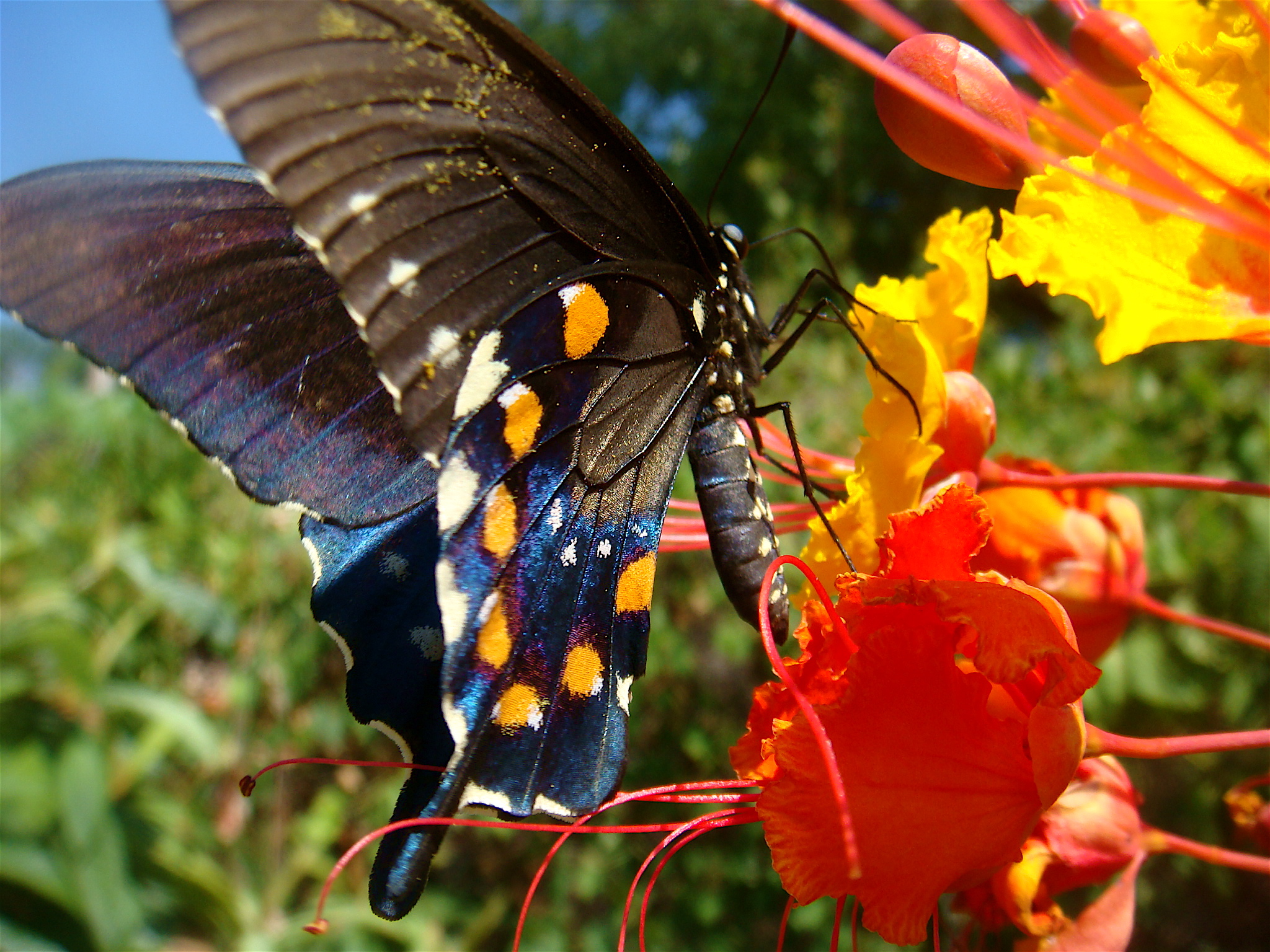
The electric blue color on this Black Swallowtail butterfly’s wings was incredibly vibrant, the orange spots quite fitting against the Pride of Barbados, Caesalpinia pulcherrima that it was drinking heavily from. Each flower on this plant is composed of five showy petals with very prominent six inch long red stamens, reminiscent of the legs of the swallowtail.
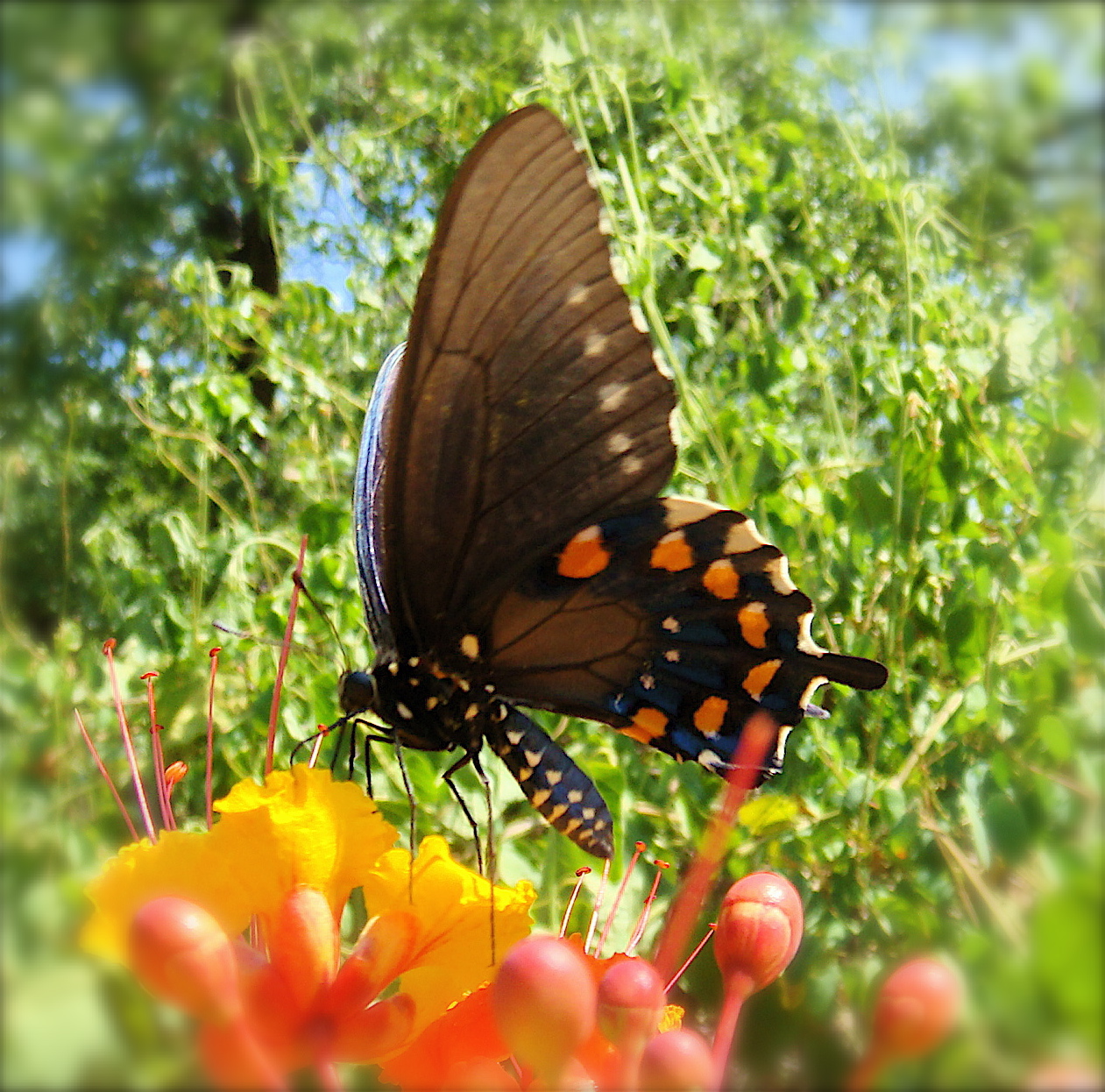
I have had a bumper Pride of Barbados year, this year. I started out with two plants and afer a few years of self, (and helped) seeding, I am now up to eight. The best thing about these plants is that it can never be too hot or too dry for them, in fact they thrive on it! I have no idea what or how their root structures works, but it could not be any more efficient. So much color, so little maintenance, perfect for Texas, especially this year.


“The problem with sotols, is that its full of spines.”
Another bunch of drought warriors are the Sotols, they may take quite some time to reach maturity, but it is well worth the wait.
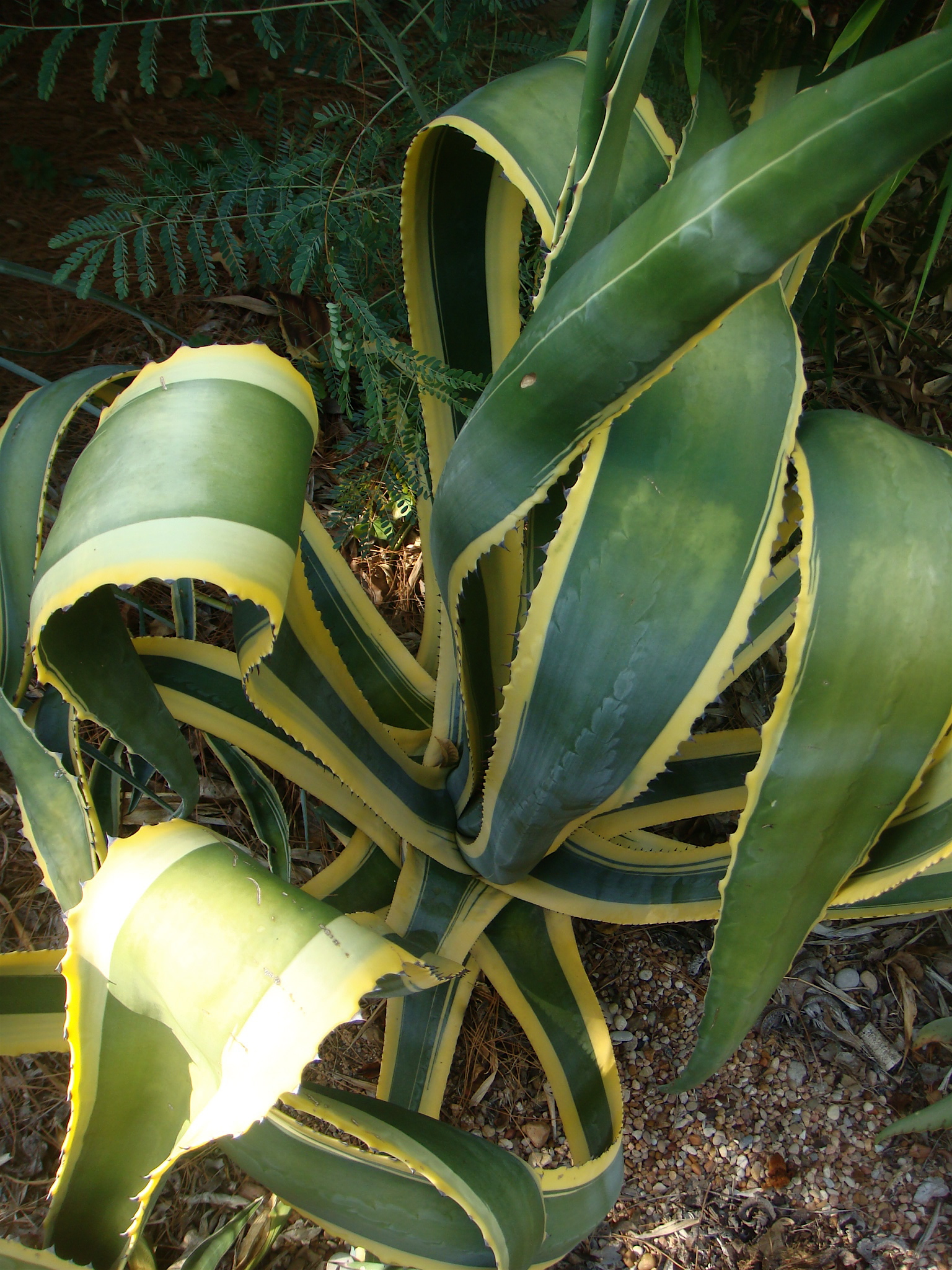
Looking like tribal tatoos, these Agave Americana are also no strangers to the heat.
Moving on…
The following scene may be a little disturbing to some sensitive readers, things have got worse around the decaying Cactus Man. It seems as though my over-zealous face-carving “proceedures” have created their very own Guyana Tragedy. The scene looks totally absurd now, like a bunch of dead cacti-heads wielding green table-tennis bats. All that time I spent swelling the base nodes, then I cause this to happen! It appears that all of the main paddles were connected via a common root system / tubor/ something or other. One by one they are shriveling up and keeling over, in a way that only cactus paddles can.
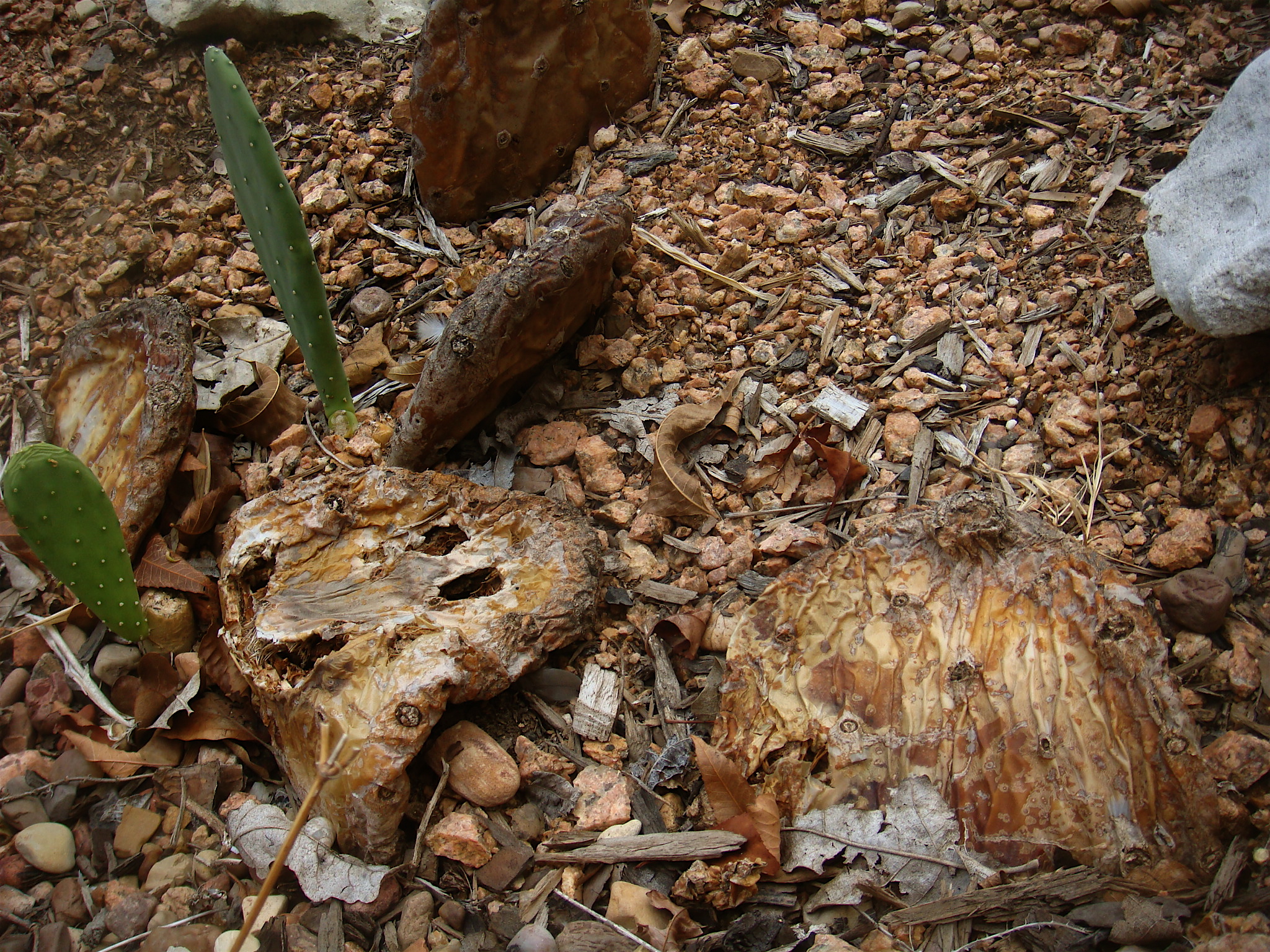
The Cactus Man wiggled his little green bat to indicate he had something to say, so I leaned in close. In a parched, sandy voice, he rasped out the blood curdling words…”your serve”. I flicked him over his dead head and still got a bunch of cactus barbs in my finger…Stupid Cactus Man, with his healthy table-tennis paddle.
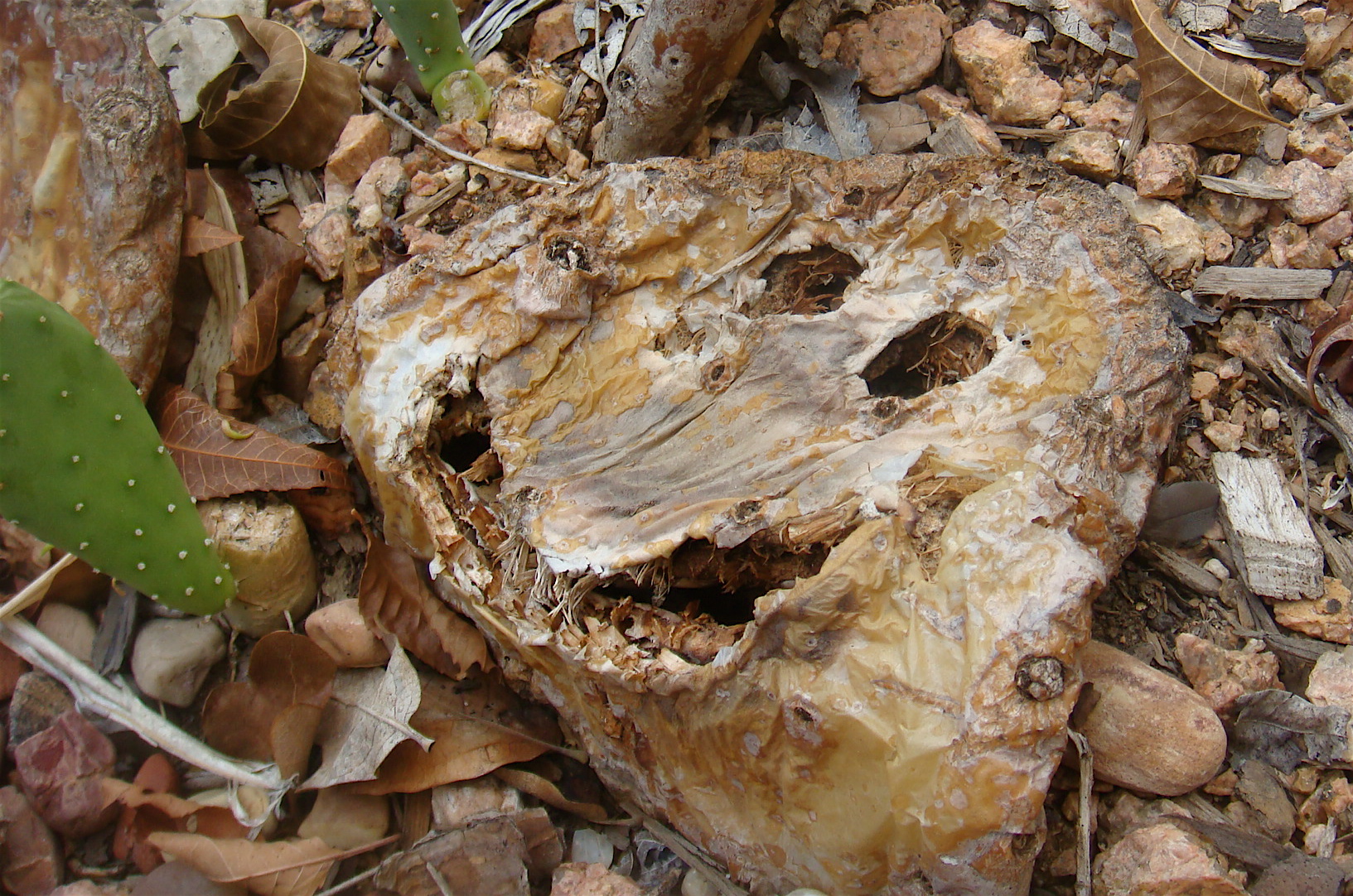
I could have sworn that his “smile” widened somewhat when he realized he had spiked me. In his honor you may have noticed that I have made him my new online avatar.
RIP Catus Man, 2005-2009 (sorry I killed you and your friends).
On a softer note, (well at least this part of the grass), the first new blooms on my pampas grass have started to emerge. This one is my favorite with its slightly pink plumes.
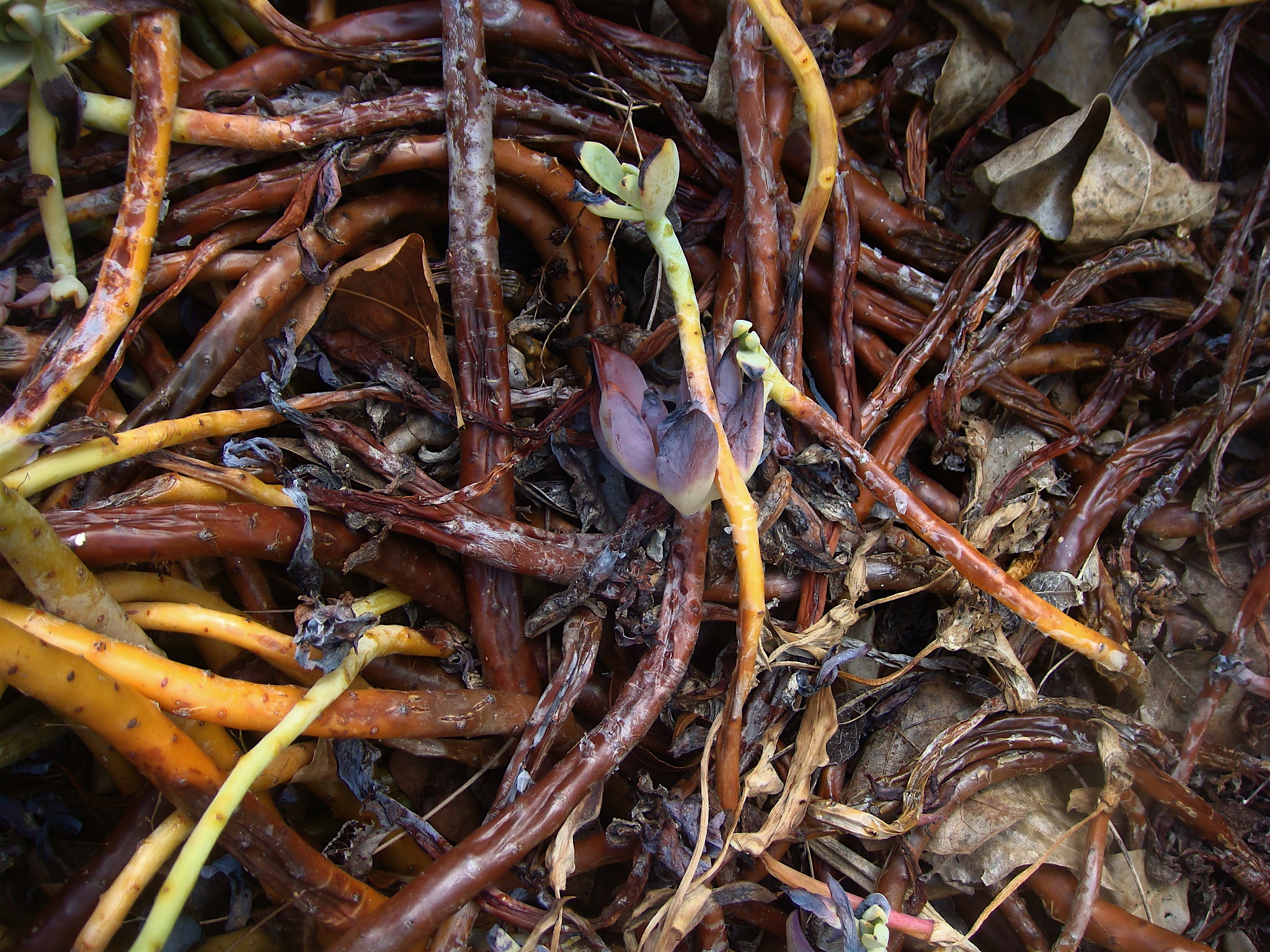
Pretty, Huh?
This writhing tangle of stems belongs to a Ghost Plant, Mother of Pearl Plant
Graptopetalum paraguayense, these clusters have really struggled in this year’s drought. It used to look like this:
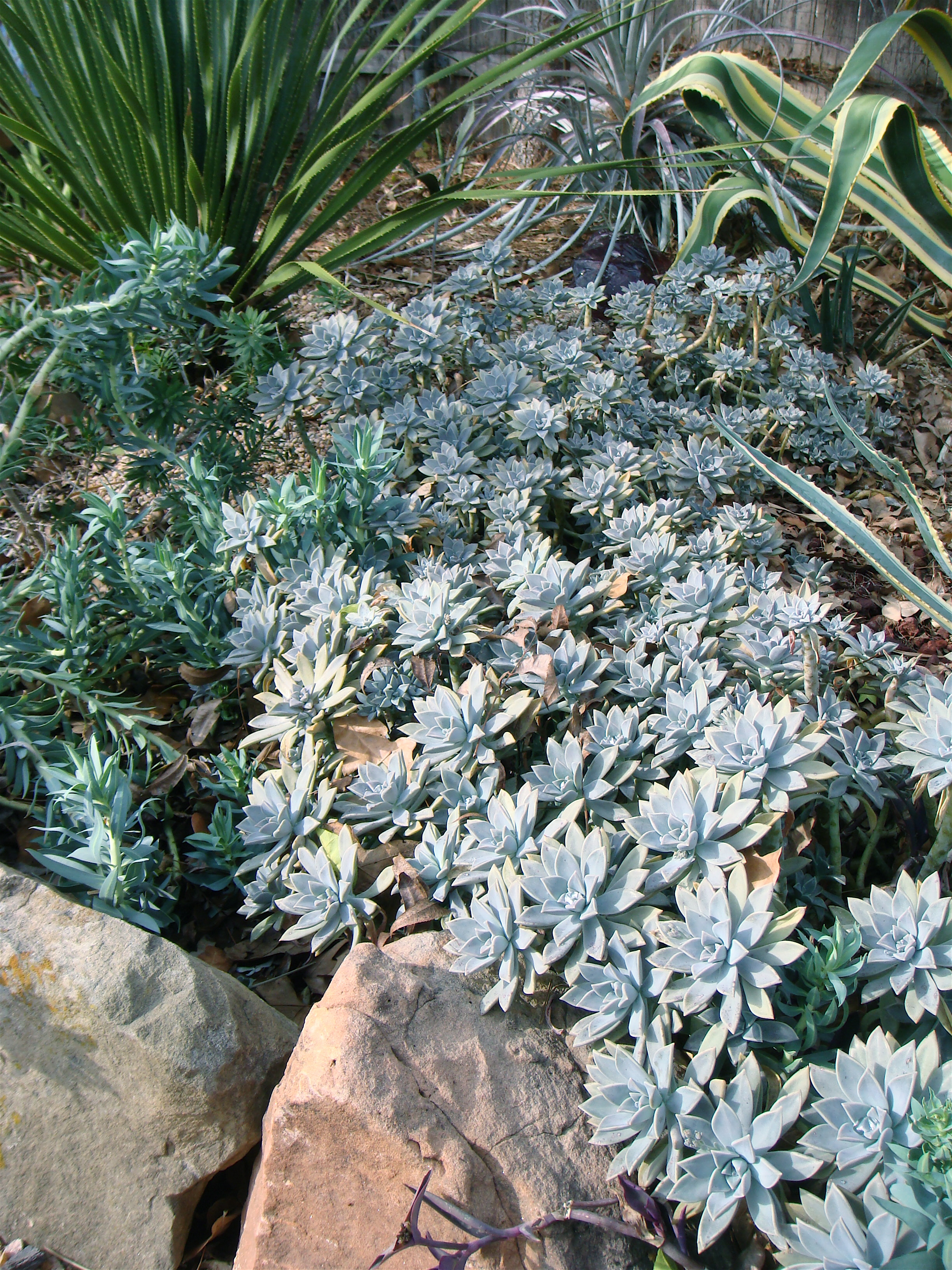
And finally a couple of before and after shots to offer some appeal to a house that is going to be sold…


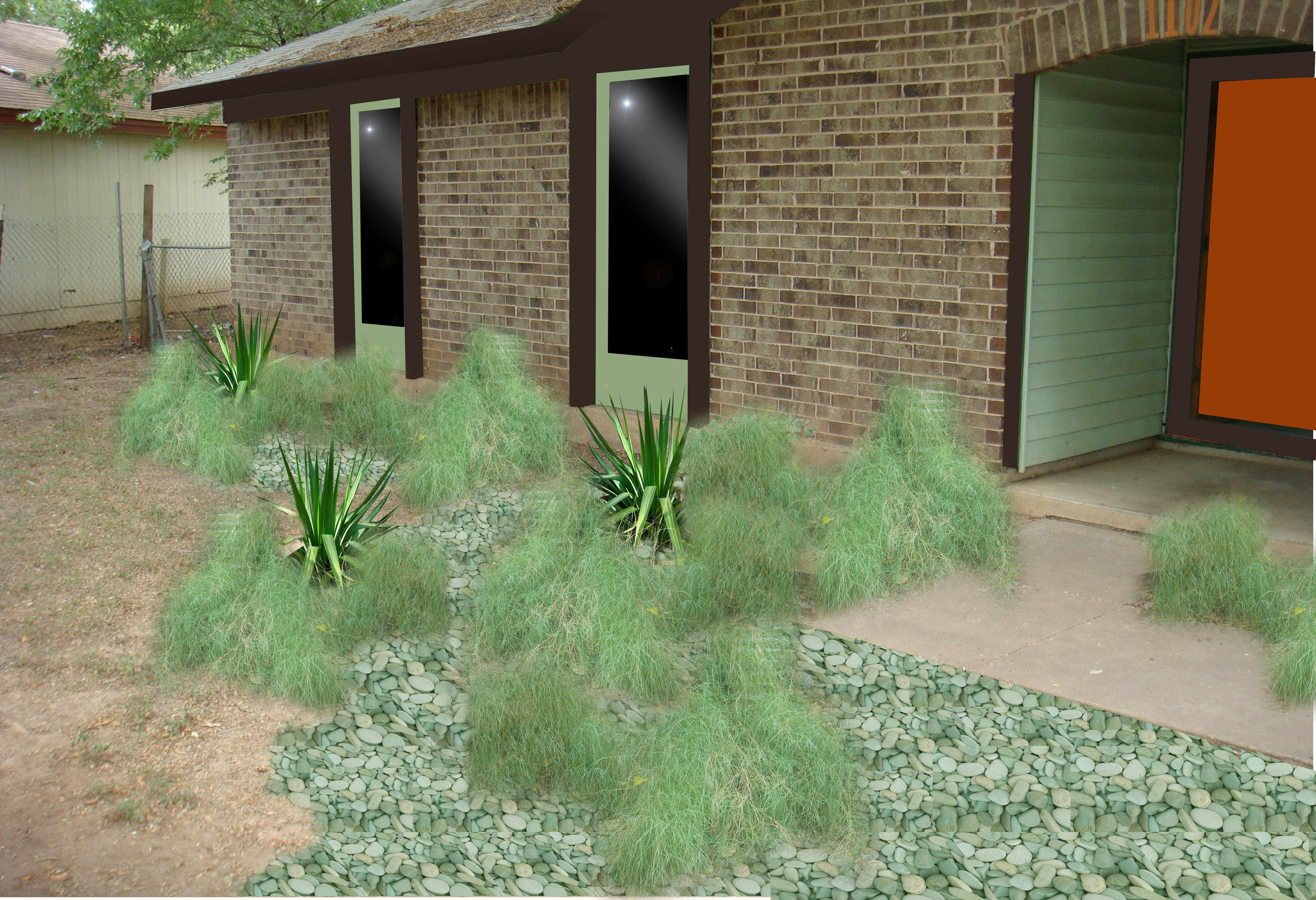
“Softening a corner”.
Bamboo Muhly and contrasting soft leaf yucca provide a simple and hardy planting scheme that provides a lot of punch and movement. An extremely low cost scheme, to cover a large area. I cannot wait to try this one out on the ESP hell-strips, (obviously with a more abundant amount of yuccas)!
Stay Tuned for:
“Ghost in the Machine”
All material © 2009 for eastsidepatch. Unauthorized
intergalactic reproduction strictly prohibited, and
punishable by late (and extremely unpleasant)
14th century planet Earth techniques.
Inspirational Image of the Week:

